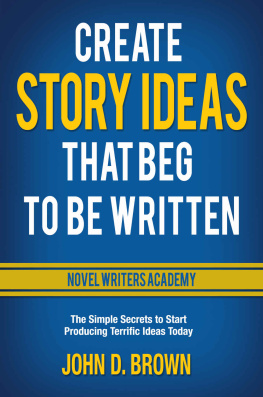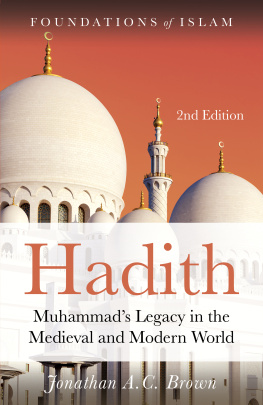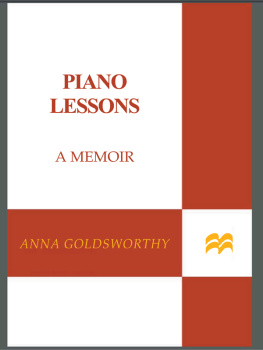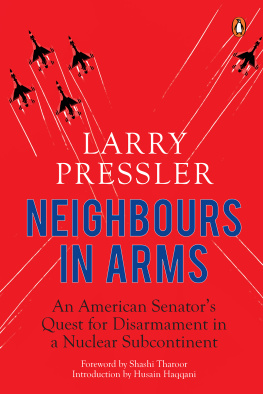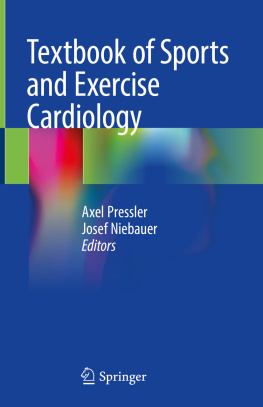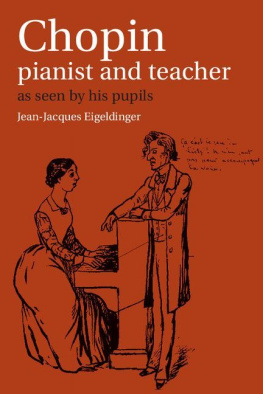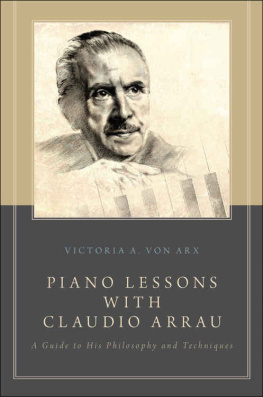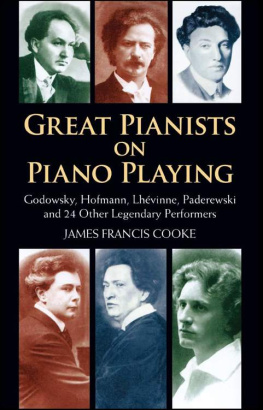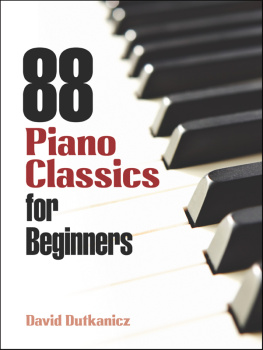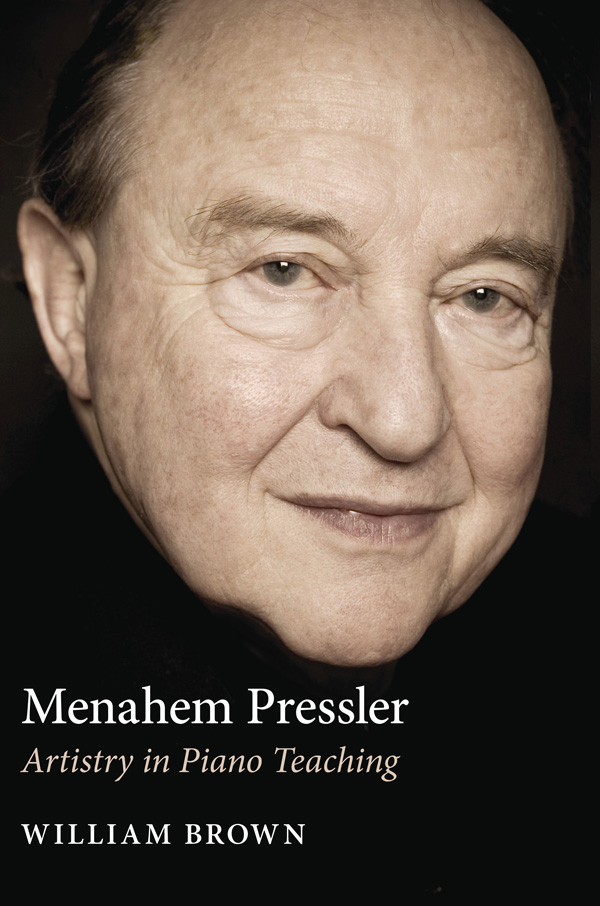Menahem
Pressler

Menahem
Pressler
ARTISTRY IN PIANO TEACHING

William Brown
Indiana University Press
BLOOMINGTON AND INDIANAPOLIS
This book is a publication of
Indiana University Press
601 North Morton Street
Bloomington, IN 47404-3797 USA
http://iupress.indiana.edu
Telephone orders 800-842-6796
Fax orders 812-855-7931
Orders by e-mail
2009 by William Brown
All rights reserved
No part of this book may be reproduced or utilized in any form or by any means, electronic or mechanical, including photocopying and recording, or by any information storage and retrieval system, without permission in writing from the publisher. The Association of American University Presses Resolution on Permissions constitutes the only exception to this prohibition.
The paper used in this publication meets the minimum requirements of American National Standard for Information SciencesPermanence of Paper for Printed Library Materials, ANSI Z39.48-1984.
MANUFACTURED IN THE UNITED STATES OF AMERICA
Library of Congress Cataloging-in-Publication Data
Brown, William Paul, date
Menahem Pressler : artistry in piano teaching / William Brown.
p. cm.
Includes bibliographical references and index.
ISBN 978-0-253-35241-5 (cloth : alk. paper) 1. Pressler, Menahem. 2. Pianists. 3. Piano teachers 4. PianoPerformance. 5. Piano musicInterpretation (Phrasing, dynamics, etc.) I. Title.
ML417.P75B76 2009
786.2092dc22
[B]
2008022724
1 2 3 4 5 14 13 12 11 10 09
To Menahem Pressler,
mentor and friend, whose teaching and performing have
enriched and transformed generations of musicians.
CONTENTS
PREFACE: A FEW WORDS BEFORE
We were returning from a Beaux Arts Trio concert in Bloomington, Indiana, when my wife, Kathy, remarked, Someone must write a book about Mr. Pressler. My thoughts returned to her comment again and again over the next few days, and I realized the significance of her statement. I phoned Menahem Pressler the following week. He shared with me that a biography by Cynthia Wilson was indeed already being prepared for publication and added, There have been so many thingsarticles, documentaries, and the Nicholas Delbanco book about the Beaux Arts Trio. But nothing like the present book: no comprehensive study of Presslers teaching legacy had been attempted. I told him I had accumulated many pages of notes transcribed from my lessons with him from 1969 through 1977, as well as hundreds of pages of scores with his markings, images, fingerings, and phrasings; and I realized that there were many others who also cherish their remembrances of studying with Menahem Pressler. What a treasure it would be to have access to all those comments and markings that this world-renowned performer/teacher/mentor/friend has made over the fifty-plus years of his career!
As I suspected, the resources were abundant. It was only necessary to collect these materials and organize them for use by future pianists and teachers. Indiana Universitys Jacobs School of Music generously provided names and addresses of Presslers students from 1955 through 2007. I sent each of these persons a survey and a request for any tapes they might have of their lessons with Pressler and copies of musical scores he had marked for them. Additionally, participants from the Adamant Music School in Vermont contributed their remembrances, musical scores, and tapes and Mr. Pressler directed me to several former students for personal interviews that provided tremendous help in enlarging my perspective of Presslers impact on the world of pianism.
These participants represent more than five decades of Presslers teaching, the impact of which is international in scope and includes esteemed concert artists; college, university, and conservatory professors; teachers with private studios; and gifted amateur musicians. Presslers influence on the lives of these people is apparent by what they have told me: His influence has become part of everything I do. I think about him every day. I keep his picture on my door so that I see it every day. I think about what Ive accomplished, and I think, He would be pleased.
offers twenty-three measure-by-measure lessons. These are composites of Presslers markings made in students musical scores as well as transcripts of lessons and master classes. Measures for all pieces are numbered in the conventional manner, beginning with the first complete measure and skipping first endings unless otherwise indicated.
For this volume, Mr. Pressler allowed the inclusion of his lecture-recital on Beethovens Sonata in A-flat Major, Op. 110, which he presented at the Metropolitan Museum of Art in New York City in February 2004, as well as the transcript of a lecture he presented at the TCU/Cliburn Piano Institute in Fort Worth, Texas, in 2005. These presentations show aspects of his influence apart from his teaching.
A chart of Presslers musical ancestry is included as Appendix A and is expanded in Appendix B, tracing his teachers through many of the great pianists and musicians of history, including Franz Liszt, Frdric Chopin, Ludwig van Beethoven, and even J. S. Bach. Appendix C comprises tributes from students, and Presslers student rosters, 19552008, are included as appendix D.
When asked what he would like the book to accomplish, Mr. Pressler replied, What a book like this can do is share with teachers what in my life has been my primary activity. If someone reads it and sees how one teacher went about doing it and how in some ways he succeeded, that is what the book can show.
Menahem Pressler has given the world a tremendous legacy of artistic piano performance and teaching, and it is essential that we preserve and maintain this legacy. As we gain an appreciation for both the technical and expressive facets of Presslers teaching, we will discover that our eyes are opened to a deeper understanding of the composers intentions, and our ears are better attuned to a limitless palette of musical colors and possibilities. And by applying his principles in a broader manner, we can learn about setting goals, appreciating beauty, and striving for excellence in every area of our lives.
ACKNOWLEDGMENTS
Those who contributed anecdotes, tributes, comments from Pressler during lessons and master classes, and other remembrances are myriad and include Presslers friends, colleagues, students, former students, and acquaintances. I am especially grateful to my family members for their support, to Tim McCarty who helped in taping my interviews with Mr. Pressler, to Susan Guymon and Eric Schramm for their editing work, to Melinda Baird who made available numerous resources, to Indiana University Archives for their assistance, to Sara Pressler for her thoughtful insights, to Edna Pressler for her encouragement, and most of all to Menahem Pressler himself for his willingness to devote the time, energy, and insight needed to bring this project to completion.
Contributors from Presslers former Indiana University students include Jane Abbott-Kirk, John Adams, David Alpher, Fernando Araujo, Konstantine Athanasakos, Mi Jai Auh, Melinda Baird, Margaret Barela, Paul Barnes, Jonathan Bass, Alasdair Beatson, Gayle (Cameron) Blankenburg, Jimmy Briere, Madeline Bruser, John Burnett, Diana (Haddad) Cangemi, Mark Cappelli, Ted Carnes, Susan Chan, Angela Cheng, Mikyung (Carrie) Choi (Koh), Winston Choi, Alan Chow, Alvin Chow, Jeanne-Minette Cilliers, Lynda Cochrane, Jack Cohan, Jeffrey Cohen, Paula da Matta, Andrew DeGrado (deceased), Henry Doskey, Jerry Emmanuel, Paula Ennis, Zoe Erisman, George Fee, John Ferguson, Anne-France Fosseur, William Goldenberg, Frances Gray, Pamela Griffel-King, Charlene Harb, Christopher Harding, Robert Hatten, Wen-Ting Huang, Mia (Kim) Hynes, Sherri Jones, Manami (Naoe) Kawamura, Pieter Kuijken, Julia Lam, Marilyn (White) Lowe, David Lyons, Gordon Macpherson, Stephen Mann, Pauline Martin, Robert Mayerovitch, Roger McVey, Fred Moyer, Kevin Murphy, Megumi Nagai, Saori Ohno, Tongsook Han Park, Rebecca Penneys, Mary Rucker, Ann Saslov, Scott Schillin, Jacqueline Schmitt, Joshua Seedman, Kevin Sharpe, Karen Shaw, George Shirley, Jill (Trudgeon) Sprenger, Mark Sullivan, Rmon Tamaran, William Tucker, Daria van den Bercken, Charles Webb, Sandra Webster, Mei-Huei Wei, and Mary Wong.


